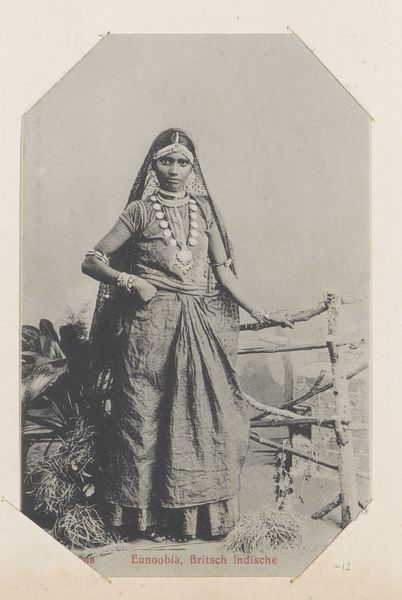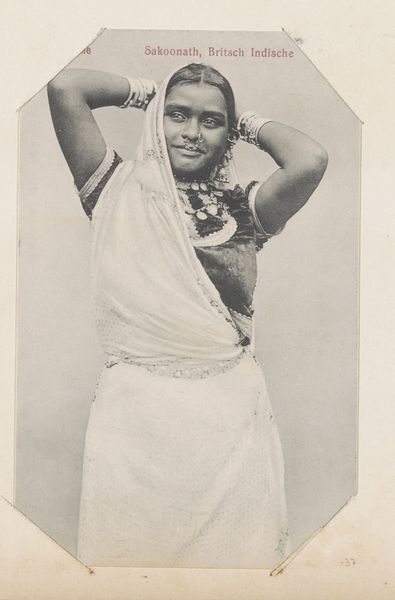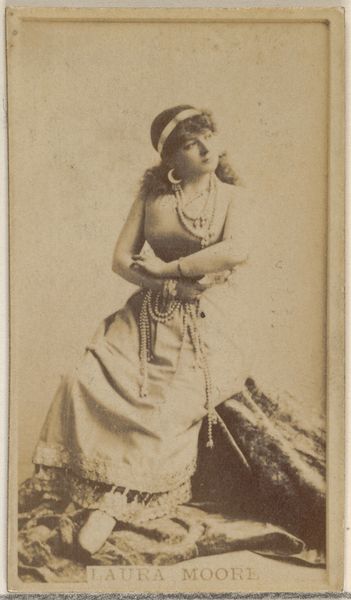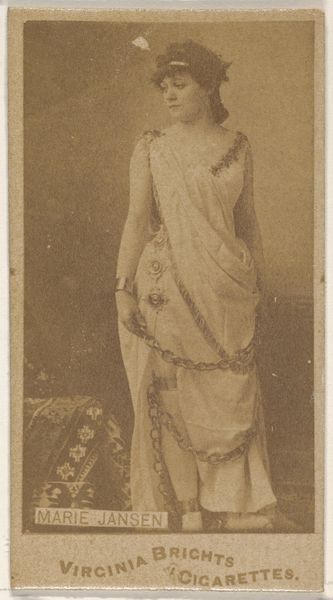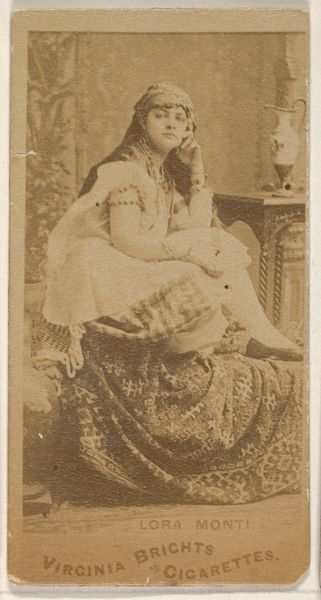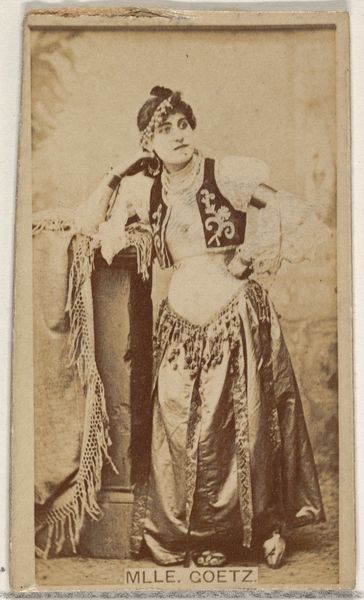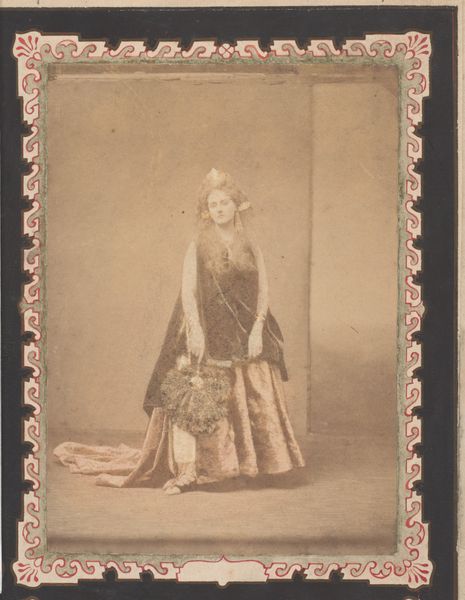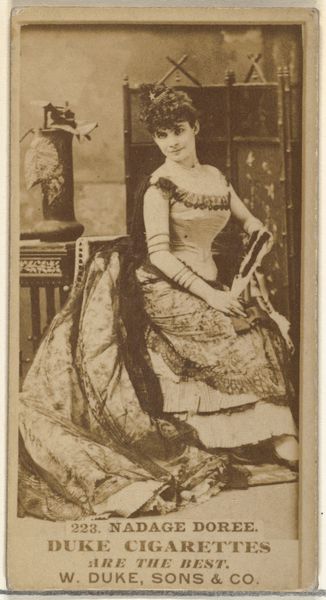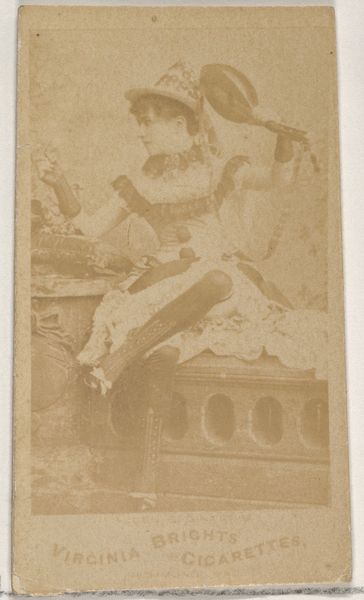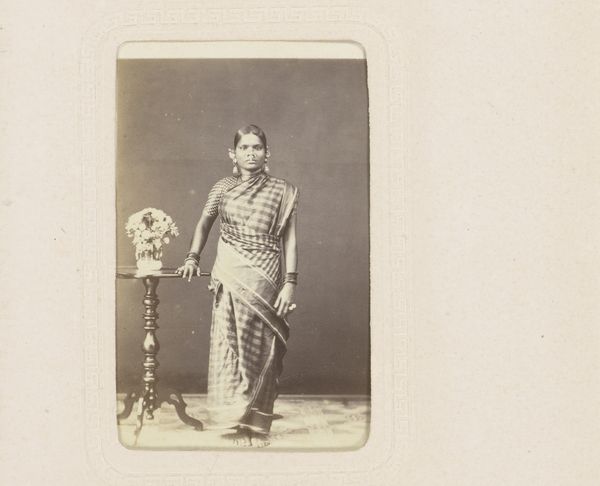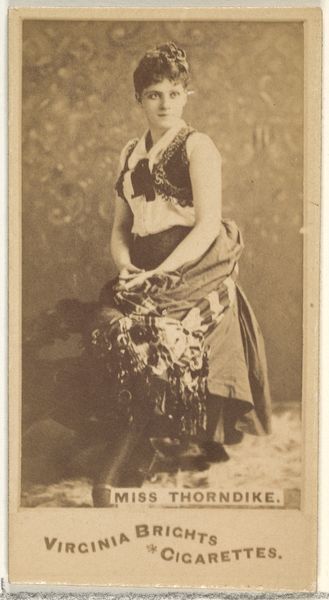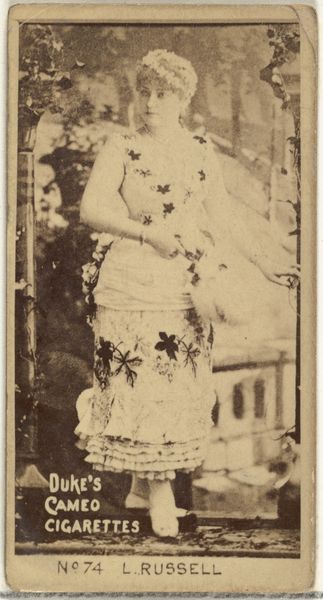
photography, photomontage
#
portrait
#
african-art
#
archive photography
#
photography
#
photomontage
Dimensions: height 135 mm, width 90 mm
Copyright: Rijks Museum: Open Domain
Curator: This photographic image, dating from around 1900 to 1910, is entitled "Zittende vrouw in feestelijke kleding"— "Seated Woman in Festive Clothing." It’s a photomontage attributed to C. Kersten & Co., a publishing house operating in Paramaribo, Suriname. Editor: My first thought? Overwhelming. I mean, she's drowning in jewels and cloth! And there's something melancholy about it, even with all the ornamentation. Like a queen on her day off. Curator: It is compelling. Kersten's firm, we must remember, played a pivotal role in disseminating images of Suriname. They were involved in crafting visual narratives of the colony for European consumption and postcards like this are obviously meant for a broad appeal. The image is a construction and speaks of the social hierarchy. Editor: Right, this isn't just a snapshot. Look at the details – the jewelry isn’t random, nor is her pose, so dignified and straight-backed. All that adornment says wealth and maybe status. Curator: Exactly. The phrase "Koelievrouw" identifies the subject. Post-abolition, indentured laborers from India were brought to Suriname. And she's "in Feestgewaad," emphasizing a constructed presentation. Notice the artificiality: backdrop, carefully arranged pose. Editor: But does the adornment feel like her, or a role she is forced to play? I am drawn in to consider the artist’s point of view. Is this glorification, exploitation, or… something in between? Is this even what a celebration outfit looked like? Curator: We see photography utilized by colonial powers as a tool for defining and controlling perceptions of colonized subjects. Understanding the distribution and reception is just as critical as identifying details. What purpose does a photomontage like this serve, especially if distributed as postcards back to the colonizer's home? What values does it promote or challenge? Editor: So, more than just pretty fabric and jewels, it becomes this little capsule of power dynamics. Curator: Precisely! These images helped reinforce ideas about the exotic other. They created an idea of Suriname which allowed consumers to feel connected while at the same time keeping that distance. Editor: Looking at her again… I am starting to feel sorry for her, knowing what the image may have meant to a different viewer at a different time. All that imposed meaning kind of diminishes her, yet paradoxically it gives her so much power now. Curator: And there lies the complexity of this image and others like it. It reflects the complicated story about colonial power, artistic license, and about agency itself. Editor: I'll definitely not be so quick to judge the melancholic face of queens on their days off in the future! Thanks!
Comments
No comments
Be the first to comment and join the conversation on the ultimate creative platform.
